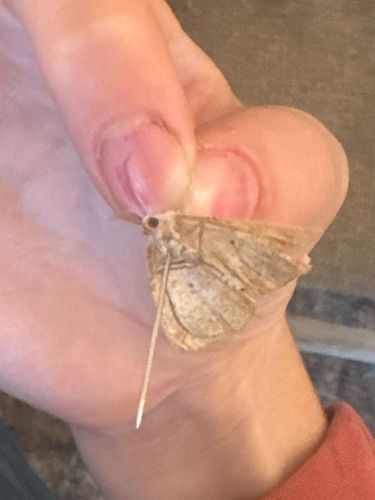Moth
Scientific Name: Unidentifiable due to image quality and commonality of appearance
Order & Family: Lepidoptera (Order); Family not definitively identifiable from image (likely Noctuidae, Geometridae, or similar large family)
Size: Widely varied, depending on species, from a few millimeters to over 30 cm wingspan. The specimen in the image appears to be a medium-sized moth, likely 2-5 cm wingspan.

Natural Habitat
Widely varied, depending on species. Moths can be found in forests, grasslands, deserts, urban areas, and agricultural fields.
Diet & Feeding
Adult moths typically feed on nectar, sap, or decaying fruit; some species do not feed at all. Larvae (caterpillars) are often herbivorous, feeding on leaves, stems, roots, or fruits of plants. A few species are carnivorous or detritivorous.
Behavior Patterns
Mostly nocturnal, attracted to light. Moths undergo complete metamorphosis (egg, larva, pupa, adult). Many species use camouflage to blend into their surroundings during the day. Specific behaviors vary greatly by species, including migration, mating rituals, and host-plant specificity for larvae.
Risks & Benefits
Risks: Some moth larvae can be agricultural pests (e.g., corn earworm, cutworms). A few species can cause damage to stored products or fabrics (e.g., clothes moths). Benefits: Important pollinators, especially for night-blooming flowers. Serve as a food source for birds, bats, and other animals. Larvae can be important decomposers. Silk moths are economically important for silk production.
Identified on: 9/25/2025